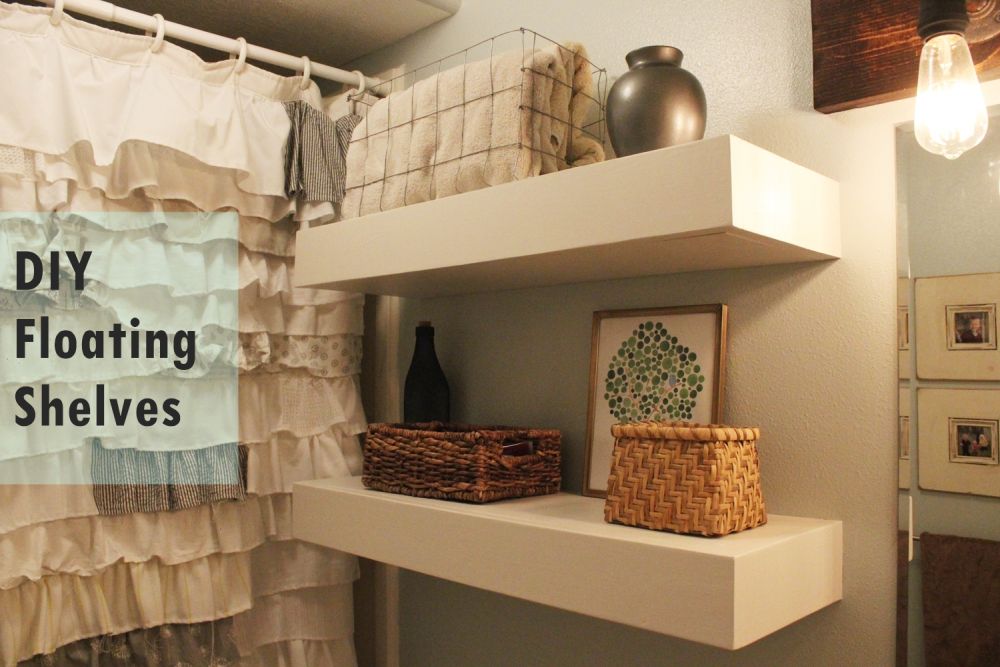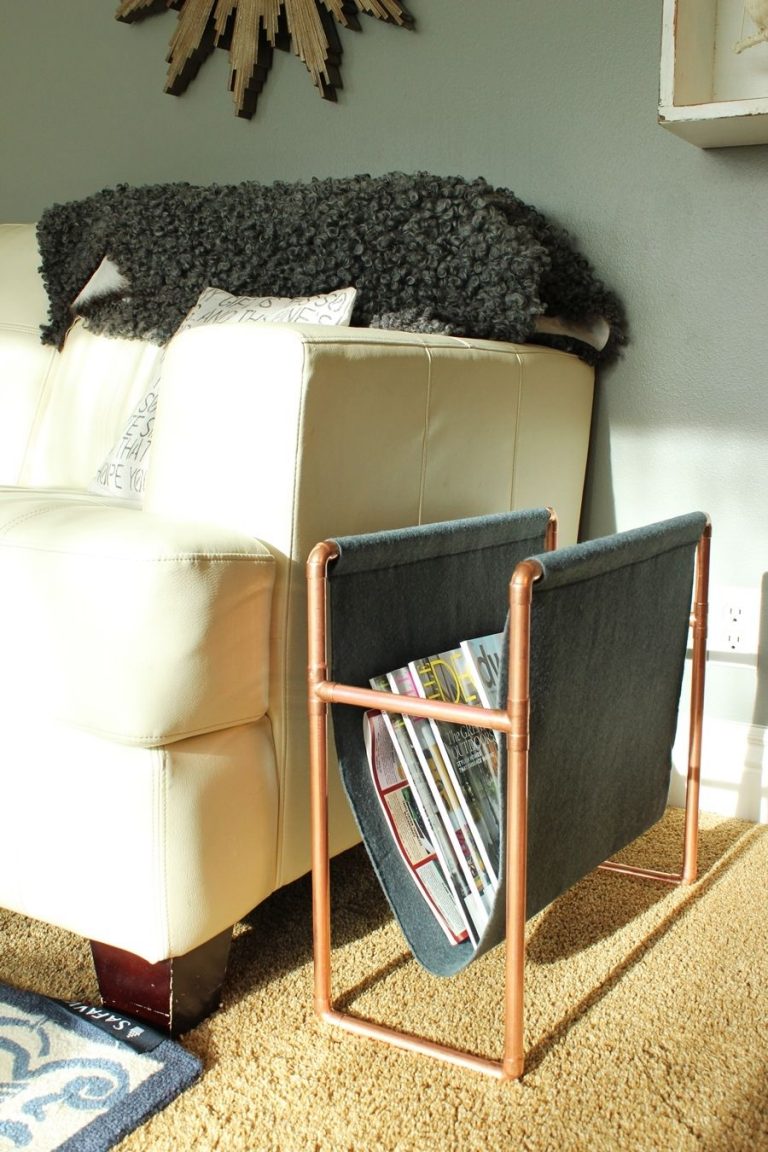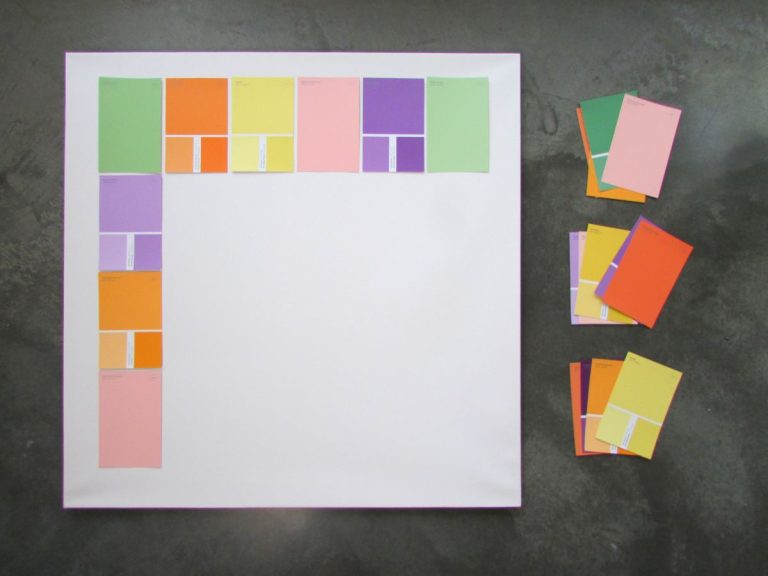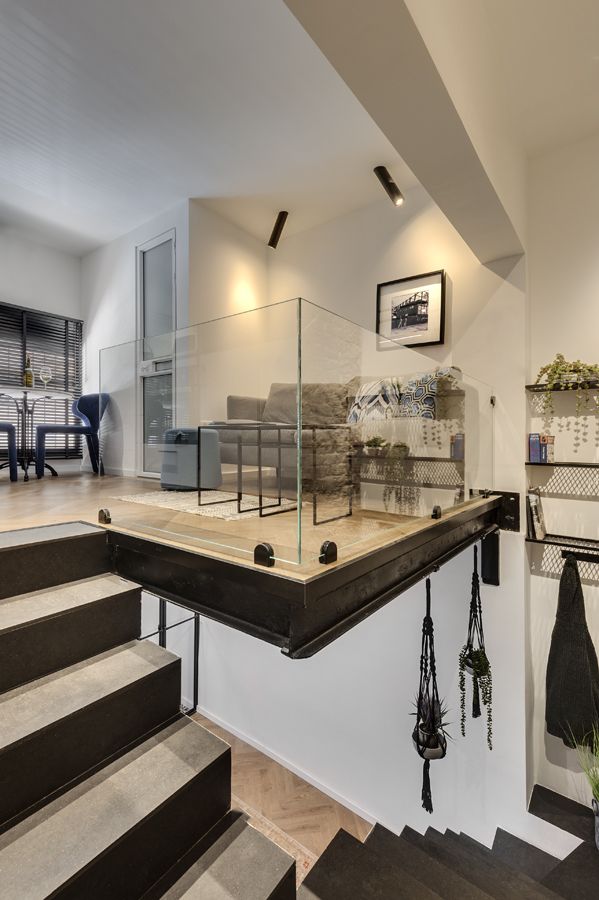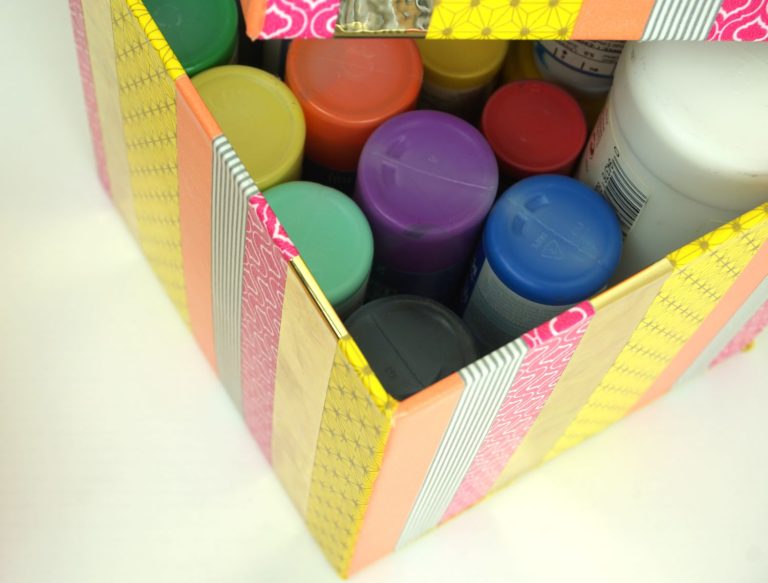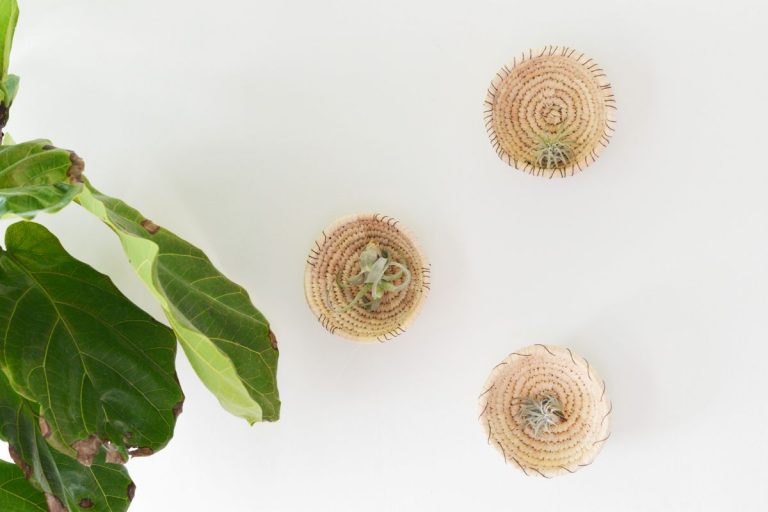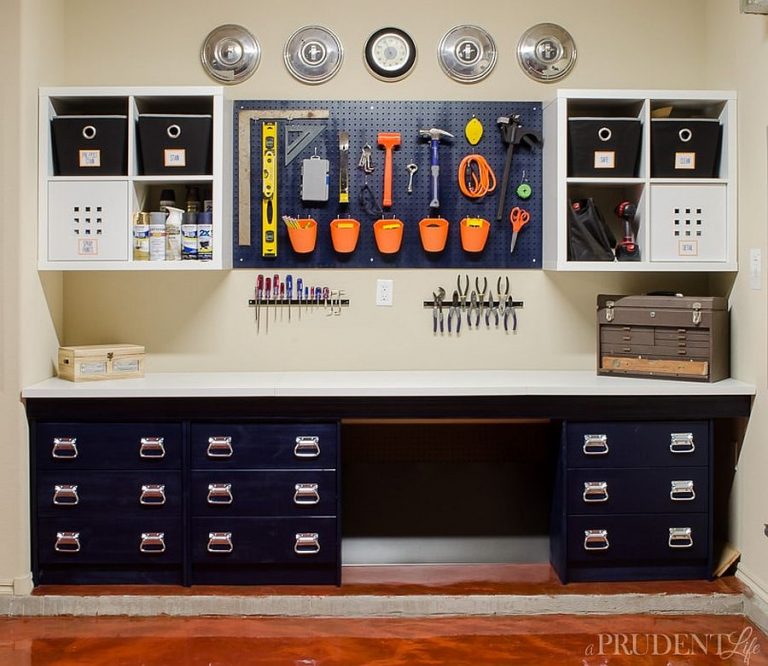DIY Floating Shelves – How To Build Extra Bathroom Storage
Do you love the contemporary look and feel of floating shelves…but feel intimidated by tackling such a project yourself? I want to let you in on a little secret – building and mounting your own chunky floating shelves is much easier than it might seem!

This tutorial will take you through the process, step-by-step with photos, to show you how it can be done in an hour or two. (Of course, the sanding and finish work will take longer and is up to you.)

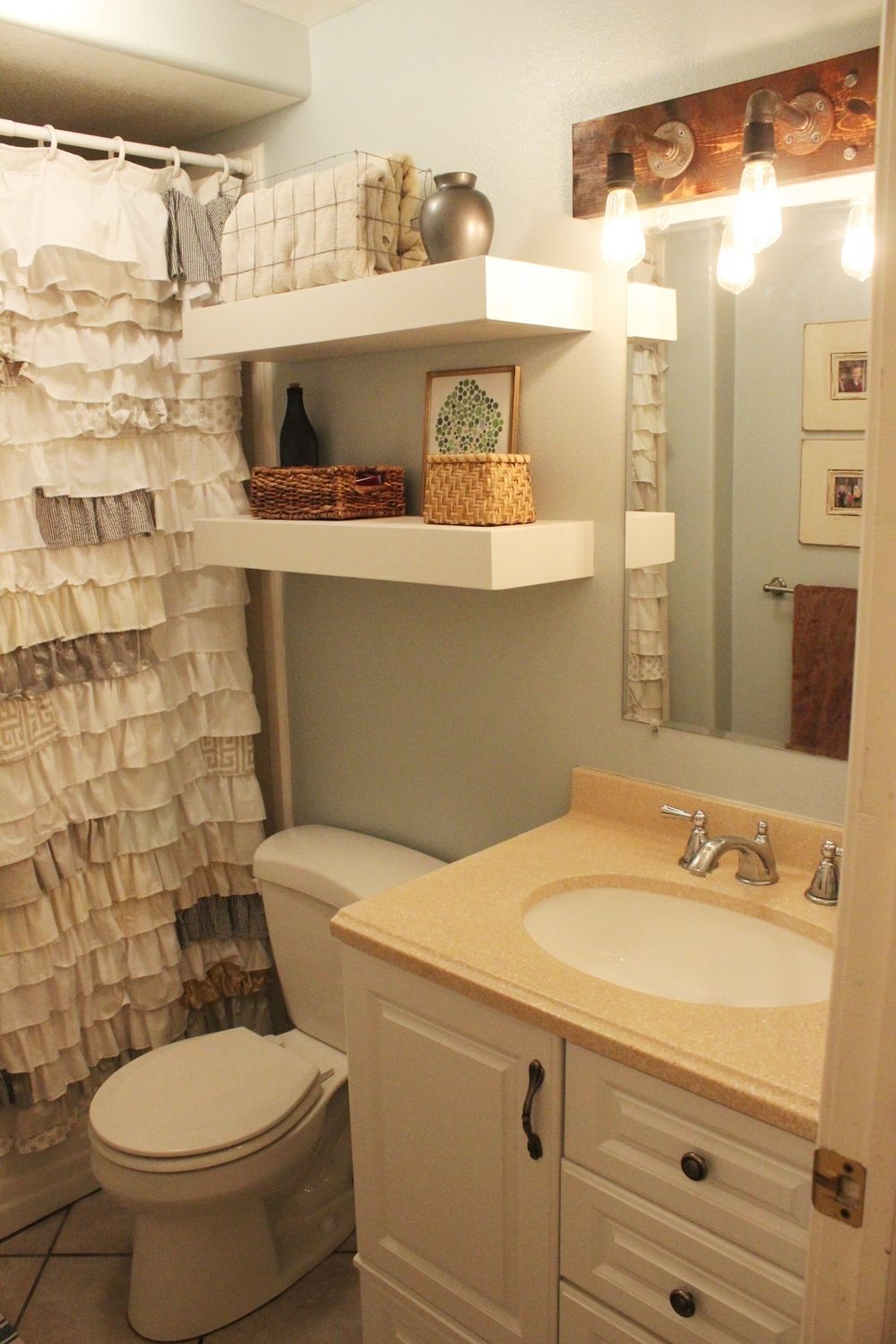
Floating shelves work well in any space, frankly, but they are particularly useful in the bathroom where horizontal surfaces and square footage both often fall on the smaller end of the spatial spectrum.

If you’re ready to switch up a useless wall (like this sad wall in this sad, dark bathroom) and make it into a showpiece, you must absolutely learn how to build floating shelves. They will change your space 180 degrees.
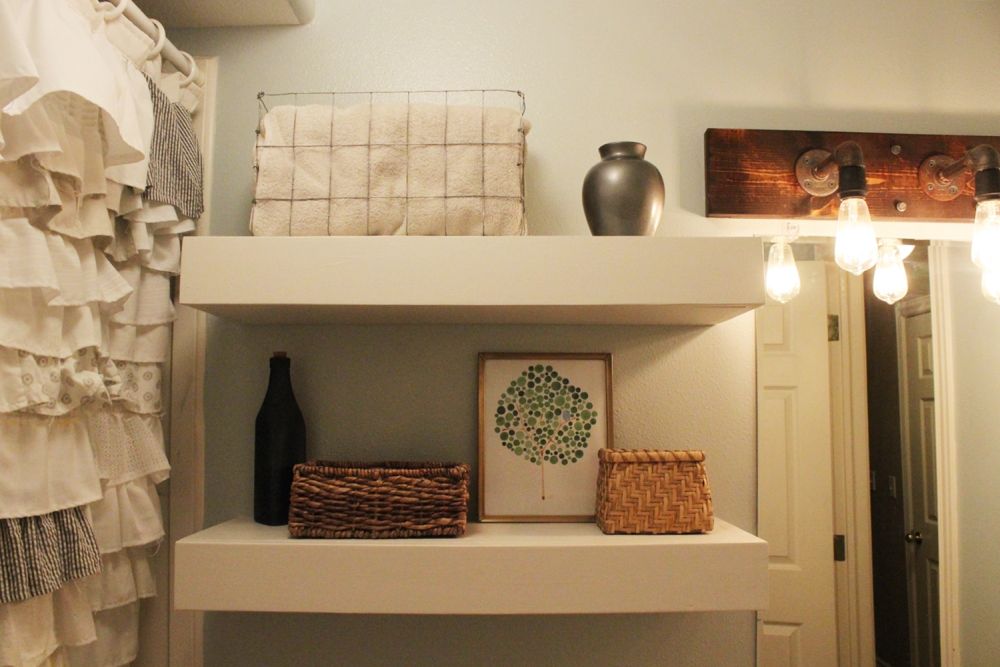
Ready to begin? I hope so! Let’s do this.

Materials you’ll need to build the bathroom floating shelves:
DIY Level: Intermediate
The list below shows what you will need to build two 28” floating shelves.
- Two (2) 1×10 boards cut 28” long
- Two (2) 1/4″ plywood boards cut to size (28”x9-1/4”)
- Two (2) 2×3 boards cut 28” long
- Six (6) 2×3 boards cut 7-3/4” long
- Two (2) 1×4 boards cut 29-1/2” long
- Four (4) 1×4 boards cut 9-1/4” long
- Twelve (12) 2-1/2” screws
- Eight (8) 3-1/2” screws
- Brad nails, wood glue, level
- Kreg jig, power drill, brad nailer, clamps
- Whatever you want for finishing (e.g., sandpaper, stain, paint, etc.)
How to build the bathroom floating shelves:

Step 1: Pocket holes
Begin by using your kreg jig to drill two pocket holes (for 2-1/2” screws) into one end of each of your six short (7-3/4”) boards.

The two holes should be about 1/2” to 3/4″ from the sides of your board.

Step 2: Clamp
Next step is to attach three of the short boards to the 28” long 2×3 board. Whenever I’m attaching one piece of wood to another using the pocket holes, I’ve found I get the best results when I clamp the pieces together so that edges and sides and ends align. In this case, I clamped the long board to my work table, then clamped the short board in place, with the clamp lining up over the joint between both boards.

Grab 2-1/2” wood screws (or kreg or torx screws).

Step 3: Screw
Holding the short board firmly into place with one hand (yes, even though it’s clamped), screw in the 2-1/2” screws to attach the board. Repeat for another short board on the other end of the long board, then one more in the middle.

Your 2×3 boards should look like this, and they now form the frame for one of your floating shelves. Repeat for the second floating shelf.

Step 4: Stud finder
Believe it or not, it’s now time to attach the floating shelves frames to your wall. Use a stud finder, if applicable, to find where your wall studs are located.

Step 5: Mark the holes
Hold up your shelf against the wall where you want it to go, then mark two holes at the placement of each wall stud.

Predrill the holes at these places on your shelf frames.

For a 28” shelf (which ends up being 29-1/2” actually), you’ll likely hit two wall studs. When these are well marked, it’s time to mount the frame(s) to the wall.

Grab your 3-1/2” screws.

Step 6: Attach the shelf
Use one 3-1/2” screw to attach the 2×3 board shelf frame to the wall. Just do one screw at this point.

Step 7: Use a level
Use a level to make your shelf frame level. Lightly pound upward or downward on the long board (rather than the short boards) to adjust the frame to level.

When your frame is perfectly level, it’s time to screw in the rest of your screws.

Apply one screw to the second set of predrilled holes first, then apply the other two screws until all four holes are filled and the frame is securely mounted to the wall.

Before you mount your second shelf, you’ll want to ensure vertical alignment. Use the level against one side of your first shelf, and mark with a pencil the place where the second shelf’s side should go.

I will move this shelf to the right about 1/4″, based upon my marking from the level.

Step 8: Second shelf
Mount the second shelf to the wall at the height/distance that works for you and your space.

Your frames will look something like this.

Step 9: Bottom plywood
With the frames mounted to the walls, it’s time to install the bottom piece to both shelves. Take one of your 1/4″ thick plywood pieces, cut to size, and hold it (rough side up) up to the bottom of your frame.
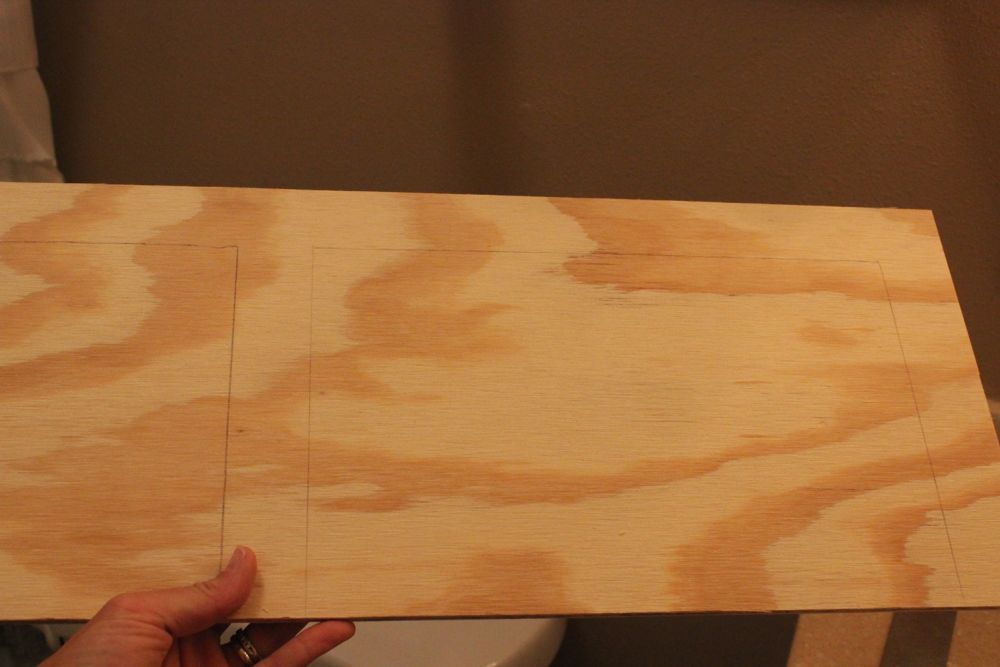
Use a pencil to mark the frame lines.

Step 10: Wood glue
Grab some wood glue. You’ll be applying a little bit of wood glue within the pencil lines on your plywood, so you can attach the bottom piece with both wood glue and brad nails.
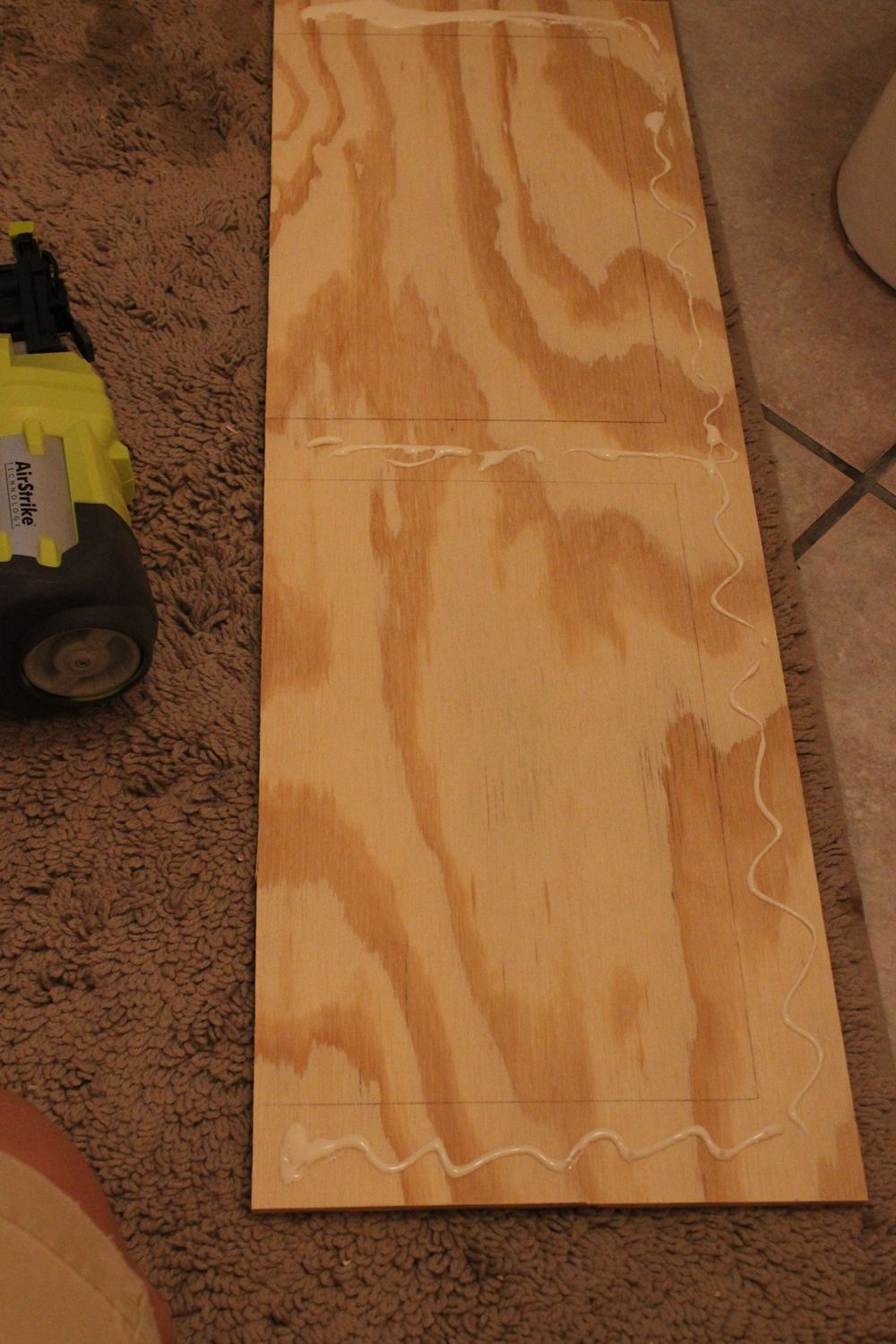
Apply the wood glue to your plywood, and stick it to the bottom of your floating shelf frame.

Step 11: Secure the bottom
Use a brad nailer to secure the glued bottom piece to the frame. Repeat for the other shelf.

(Note: Consider the size of your equipment when deciding which shelf to work on first. It was easier to attach the bottom piece to the top shelf and then move to the bottom shelf in this case, due to the size of my brad nailer.)
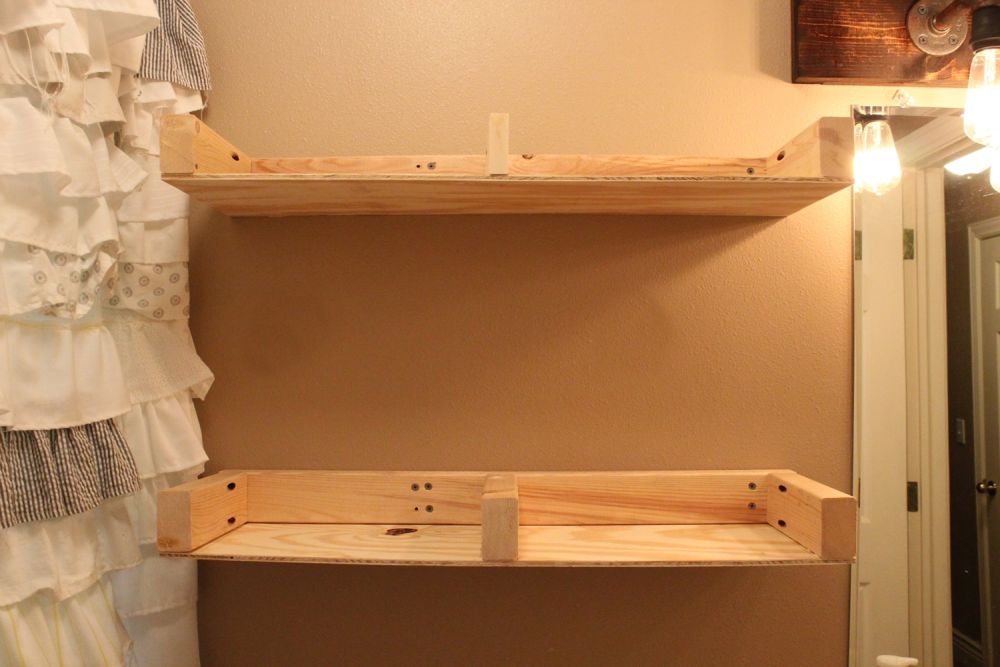
Your floating shelves are taking shape. They should look something like this.

Step 12: Top plywood
It’s now time to attach the top pieces to your floating shelves (your 1×10 boards). Use wood glue and a brad nailer to attach these to your frames, along the sides, back, and center of your top piece.
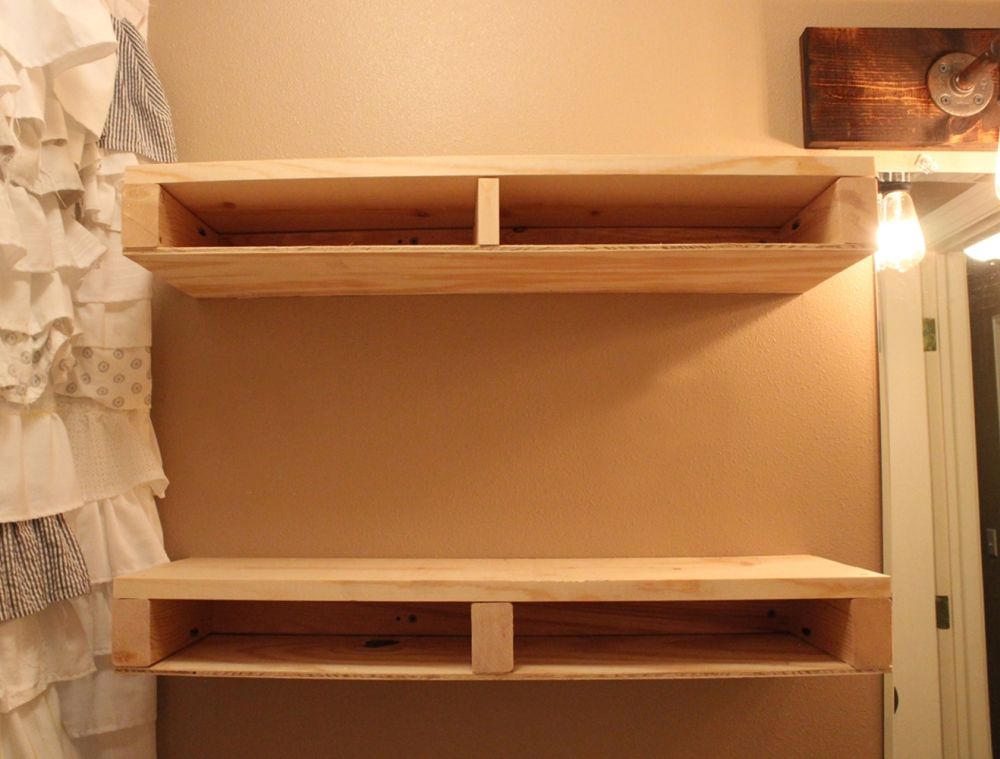
Your floating shelves are now ready for the finishing side pieces/trim.

Step 13: Side pieces
Using the same process, attach all side pieces (your 1x4s) to the sides of your floating shelves. Try to attach the 1x4s to all parts of your existing shelves – the top 1×10, the back 2×3, and the short 2×3. (But don’t worry about trying to nail into the plywood.)
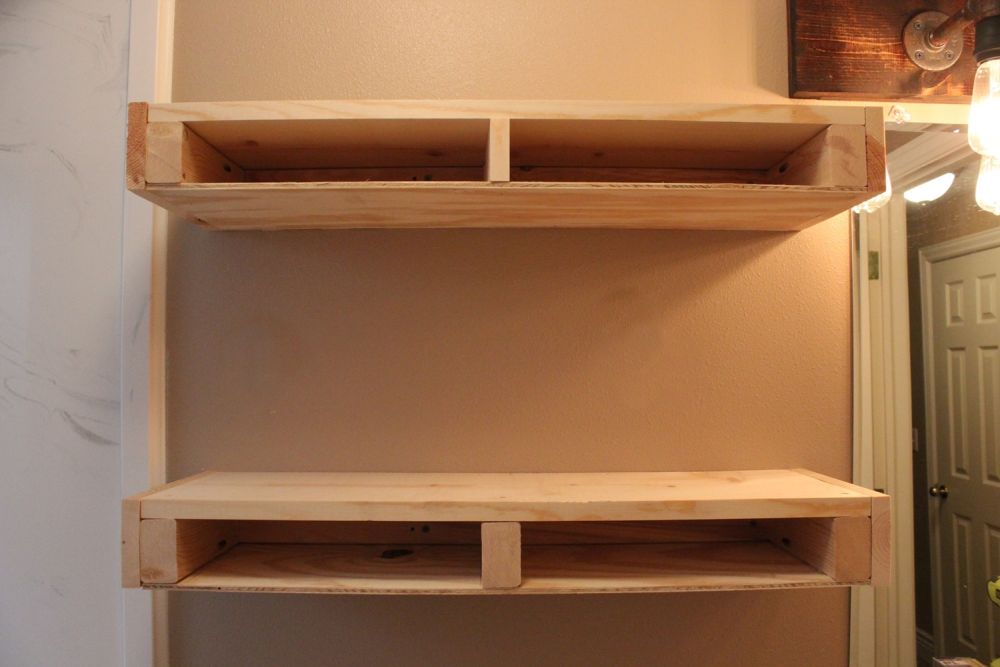
Step 14: Fronts
With your top and side pieces on your floating shelves, all you have left to do is attach the fronts. These are the 1x4s that are cut 1-1/2” longer than your other long pieces (in this case, 29-1/2”).

Neatly brad nail these front boards to your frames, again taking care to nail into as many of the floating shelves’ components as aesthetically possible.
Viola! There you have it! Chunky, awesome floating shelves that you built without too much trouble, right? Congratulations! Now it’s up to you to sand and finish them any way you want.

This example uses Benjamin Moore’s Strong White (after sanding with 120-grit sandpaper and Zinsser primer).

There are so many beautiful options for finishing your floating shelves, including staining them. It just depends on your space and your mood!

It was the original plan to stain these floating shelves, actually, but once the shelves were up in the tiny bathroom, next to an already dark-wood-heavy industrial lighting fixture (learn how to make yours here), it became obvious that the better option for this space was lighter and brighter.

Toiletries are stored in the wicker baskets, which are easy to reach and access but pretty to look at here. Spare towels are stored in the DIY industrial wire basket; everything else is kept to a minimum. The sparser décor on the shelves themselves matches the contemporary aesthetic of these white, clean-lined floating shelves as well.

Just for fun…remember where we started? These shelves make the whole (tiny) room, visually.

We hope you enjoy creating your own floating shelves! They will look amazing.
The post DIY Floating Shelves – How To Build Extra Bathroom Storage appeared first on Home Decorating Trends – Homedit.
